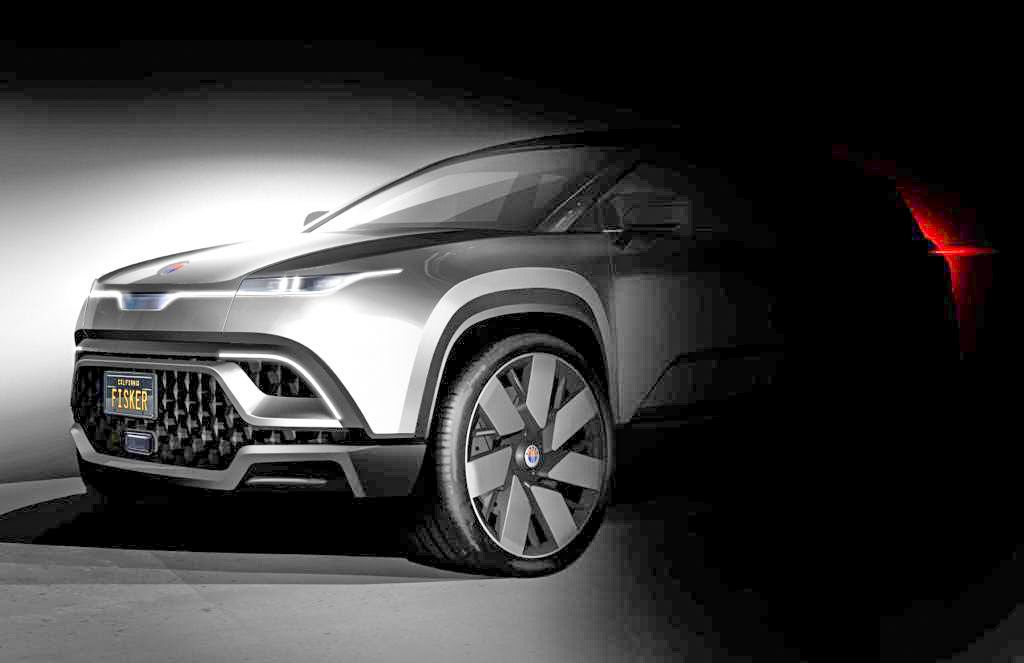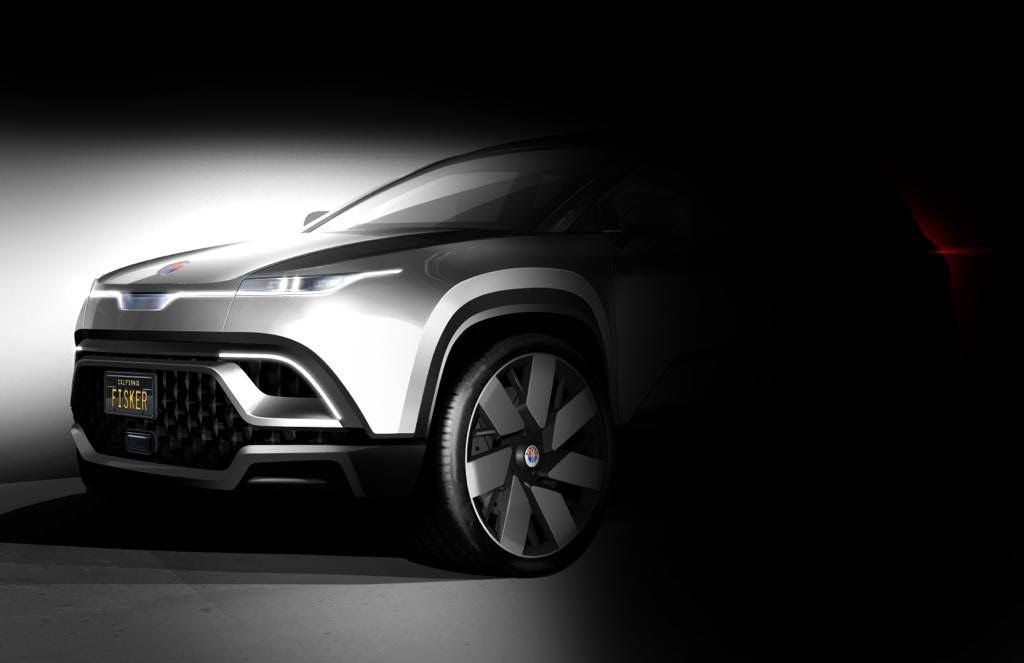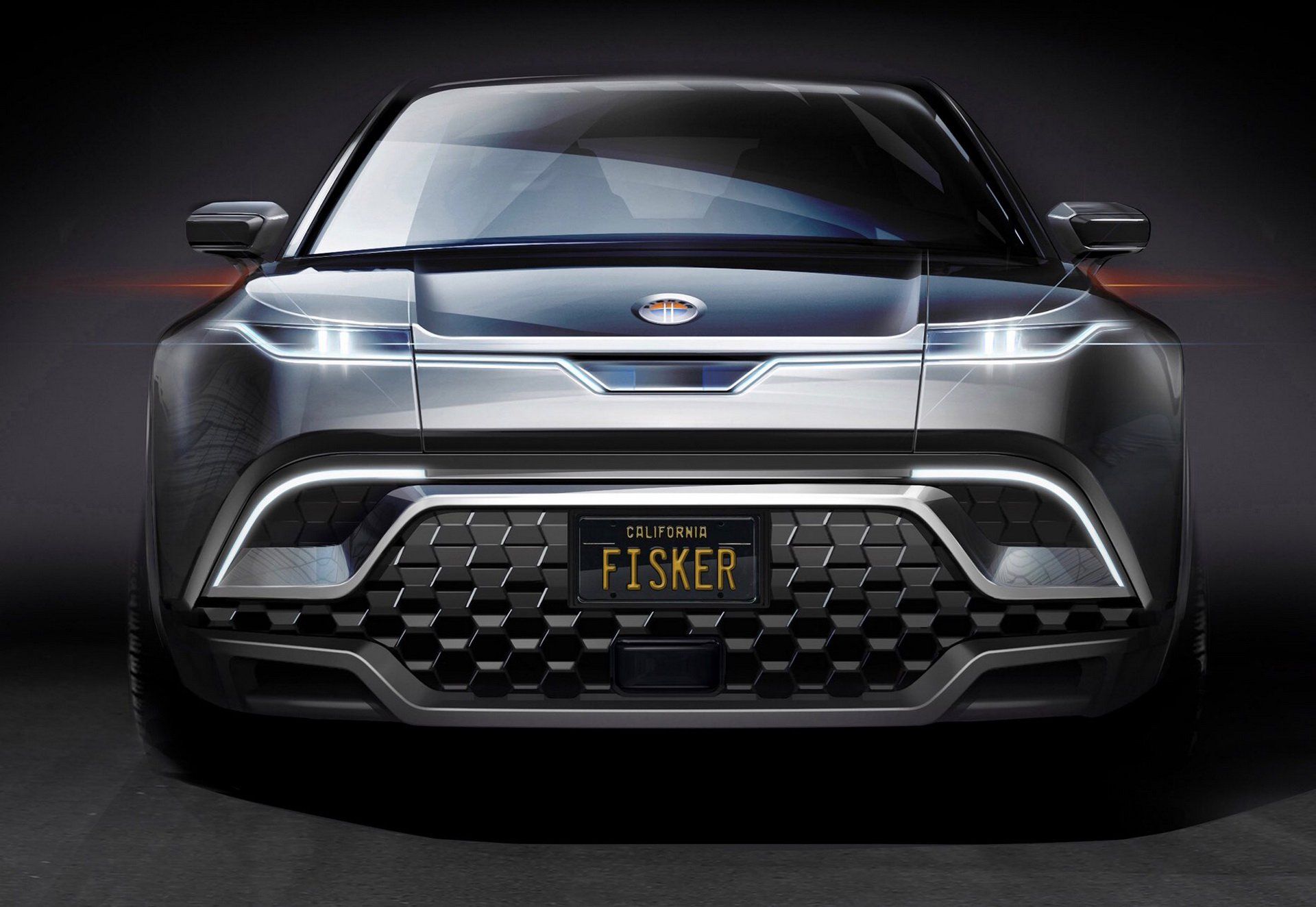Less than a month since we saw the first previews of Fisker's sort-of-affordable electric SUV, the company releases another preview and more information on the development process. Fisker is enlisting the help of a former Toyota and Volkswagen Manufacturing Executive to make the model a hit in a world that's soon to be flooded by Rivians and NIOs, among others.
Fisker, the company that was once making outlandish sports cars on BMW or Mercedes-Benz underpinnings is no more. Henrik Fisker, the founder of Fisker Automotive, seemed unphased by the bankruptcy of his company by bouncing back in 2016 when he announced that he's establishing Fisker Inc. Since then, Fisker unveiled an almighty yacht concept, a boxy electric shuttle, and an electric sedan called eMotion. Now, apparently, next in his sights in the compact SUV segment which he plans to tackle with a vehicle that should cost about $40,000.
Fisker's upcoming SUV will hit the showrooms in 2021 with a 300-mile autonomy
Fisker, the company that brought us two largely forgotten sports cars in the form of the lanky Latigo and Tramonto, has returned from the dead, like a Phoenix bird coming back to life from its own pile of ashes. In hindsight, though, it may be best not to talk about ashes in the same sentence as Fisker. I mean, you can't deny that Henrik Fisker's first company's downfall had to do with not one but two Fisker Karmas lighting up.
Those incidents have faded into obscurity nowadays when we talk about Tesla batteries re-igniting after a crash, but you can still wonder if you should take Fisker's word for it.
Still, let's not talk so much about what might happen - because we simply don't know too many things for the time being - and, instead, discuss what we do have a grasp on. We have a grasp on a new teaser image (half of it is blacked-out, and the half we do see isn't new because it was also in the center of the previous teaser) that sheds a bit more light on the upcoming SUV. Mind you, both the SUV and the eMotion sedan will hit the market as 'affordable' all-electric cars so expect some outlandish features to be ousted on the production versions.
The concept previewed in these renders is surely an aggressive one: a broad grille is there as are some muscular shoulders, huge wheels, and some sizeable plastic add-ons. In the front, you'll have already noticed from the first preview released in March, the dominant feature is the grille which follows the shape we know from previous Fisker models but, this time, there's no divider in the middle. The hexagonal mesh runs across the width of the front fascia. The grille itself starts off narrow in the two corners of the fascia then widens in the middle. The grille is framed by two thick polished bars that separate the main grille from smaller ones located in its upper and lower corners. The black thing you see sticking out in the middle of the grille is the glassed radar.
The lower bumper covers are continued via the plastic wheel arch covers that accentuate the unnamed Fisker's outdoorsy orientation. There's quite a lot of room between the obviously huge (22-inch) seven-spoke rims with their blade-like design and the actual wheel arches which suggests quite a lot of suspension travel. The arches themselves are also boxy and slightly flared, giving the vehicle that 'broad shoulder' look I was talking about earlier.
We don't quite see the second half of the SUV, namely the cabin area and the tail end but we do see the taillights glowing in the darkness. I, for one, would expect to see a similar continuous light bar take up much of the space on the rear center panel as previous Fisker vehicles have all featured narrow taillights. I'd find it cool, though, if Fisker would mount the light clusters vertically on the C-pillars instead of having them laid across the rear fascia as you'd expect them to be. Something like that would really send some retro Land Rover Defender vibes out there. Part of what we don't see is a supposed panoramic roof (maybe with removable panels) that's said to offer “an extended open-air atmosphere” of sorts. Another thing we don't see is the "high-quality interior complete with a large heads-up display and an intuitive user interface”.
Now, let's talk about what will make the SUV go.
On top of that, all this wizardry is expensive and Fisker wants to push the SUV in Model Y territory price-wise with the announced ~$40,000 price tag. The Tesla Model Y has a base MSRP of $39,000 but you add to that right away the $2,20900 destination tax to find out how much people will actually pay for it. Like the Tesla, the Fisker will be built in the U.S. (Fisker currently evaluates a number of sites in states such as California, Georgia, Indiana, Kentucky, Michigan, Missouri, or Ohio) and it is said to go for about 300 miles on one charge - as much as a long-range Model Y - but we've got nothing on the performance front to tell you about.
To make the dream of building not one, not two, but four EVs over the next three years, Fisker announced it has brought onboard Don Jackson who, according to Motor Authority, "is the founder of Jackson Management Group, a consulting firm that specializes in lean manufacturing. Prior to this, he was president of manufacturing at Volkswagen of America and president of quality and production at Toyota's operations in Texas."
What are Fisker's rivals doing in the meantime?
NIO, for instance, prepares to fire in our general direction two SUVs: the bigger ES8 and the more compact ES6 that seems to have borrowed some design cues from the Lamborghini Urus but that's just between you and me. The ES8 starts in China at just $67,300, below the $79,500 base price of a Tesla Model X 75D.
The ES8 gets its juice from a 70 kWh battery pack mounted within the floor that powers two electric motors with a combined output of 641bhp and 620 pound-feet of torque that translate to a 0-to-60 mph time of just 4.4 seconds. The Model X 75D meanwhile, relies on just 322 ponies and, as such, won't go faster than 130 mph and it also will need 5.0 seconds to reach 60 mph. Autocar has tested the NIO or what they call "a generic SUV to look at" whose more impressive exterior features are the tight panel gaps (we all know how Tesla is lackluster in this department as are other manufacturers).
The British outlet says that the interior of the ES8 feels good too, wrapped in Nappa leather and with the 10.4-inch central touchscreen sitting pretty on the dash. There also is "Nomi (a pun on the words 'Know Me'), the world’s first in-car artificial intelligence personal assistant." This clever system watches you and learns what you like and what you don't like and, as a result, it will start up the radio with your favorite radio channel on, it will entertain your kids in the back, and it can perform a variety of other tricks like changing the temperature of the climate system, opening or closing the windows or even act as a GPS.
Besides the gadgetry, the ES8 feels apt on the road too, thanks to the Continental air suspension and the Brembo brake system. The steering, though, is from a different movie altogether as it's devoided of feel - apparently because that's how the Chinese like it. Then again, it's a big SUV so you shouldn't expect it to offer a particularly involving driving experience. The ES6 is more of the same but in a smaller package: it offers 455 horsepower (with swappable battery packs), 0-to-60 is achieved in 4.7 seconds, and you get the same slanted infotainment screen between the seats. There's also the Mobileye eyeq4 system that employs radars, ultrasonic sensors, and visual cameras for sprees of semi-autonomous driving. In its cheapest trim, the ES6 is priced at $52,115 which is still $12,000 away from the Fisker SUV's price tag.
Now, what about Rivian? Well, as you know, they're planning to build a robust pickup truck as well as an SUV.
Where does all this leave Fisker, then? In my mind, Fisker lacks credibility. It first needs to deliver more than words for us to really look past its past failures. Sure, the Karma looked nice (I still have wet dreams about those curvaceous rear fenders) and it was quite interesting eight years ago - it came fitted with two +200 horsepower electric motors and a 260 horsepower ICE used as a range extender since the small battery pack could only keep it on the road for 50 miles. Sadly, we never got to see on the road the pretty Karma S Convertible while the compact Fisker Atlantic didn't make it to the production line either due to the company's financial woes.
If all goes well this time around, the three budget models will be followed by the flagship eMotion sedan but that car will cost you a lot - about $130,000 for 400 miles-worth of range, a lavish leather-wrapped interior, level 4 autonomous driving modes and the much-lamented solid state battery pack that's supposed to achieve sub-1 minute charge times. Let's wait and see how things pan out.
Further reading
Read our full review on the 2019 Fisker eMotion.
Read our full review on the 2011 Fisker Karma.



